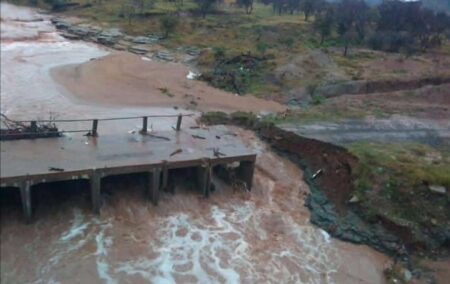According to the presidency, the excessive rain across South Africa is a result of the La Niña event, a three-to-five-year periodic cooling and warming of the surface ocean temperatures in the Pacific Ocean.
La Niña typically causes ‘above average summer rainfall’ in South Africa, says Professor François Engelbrecht of the Global Climate Change Institute at the University of the Witwatersrand.
This has led to a second state of national disaster being declared a week since the SONA, when the first was declared to deal with the load-shedding crisis. Eight of the nine provinces are experiencing heavy rainfall and floods, with the exception being the Western Cape.
Presidency’s spokesperson Vincent Magwenya said the state of national disaster would ‘enable an intensive, coordinated response to the impact of floods that are affecting Mpumalanga, the Eastern Cape, Gauteng, KwaZulu-Natal, Limpopo, the Northern Cape, and North West’.
Professor Engelbrecht said in 2020 that La Niña mostly affected the north-eastern parts of South Africa and Zimbabwe, but that it could affect the country’s entire summer rainfall area. This lines up with the presidency’s reports that Mpumalanga and Eastern Cape are the most affected. Images from Limpopo too showed vehicles being swept away and water levels rising to cover buildings, including a hospital.
Other parts of the country have reported to the National Disaster Management Centre some overflowing dams and sewage facilities, damage to roads and bridges, and the destruction of other infrastructure.
[Image: https://floodlist.com/africa/south-africa-flooding-eastern-cape-mpumalanga-february-2023]

